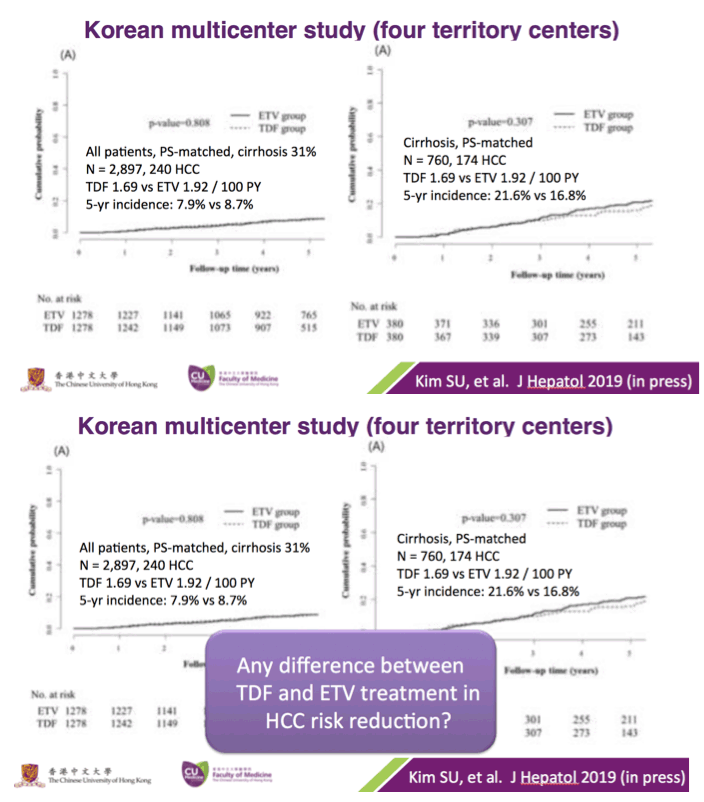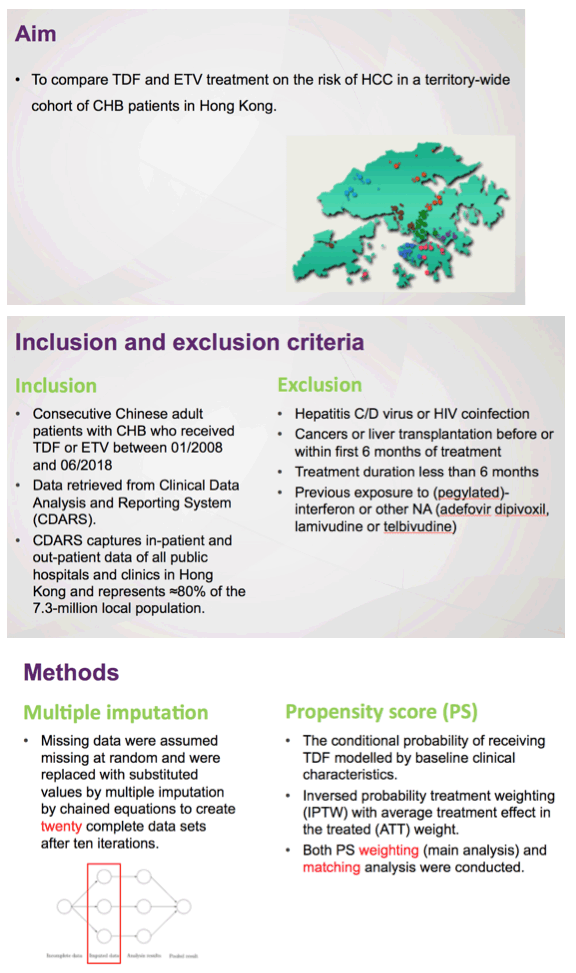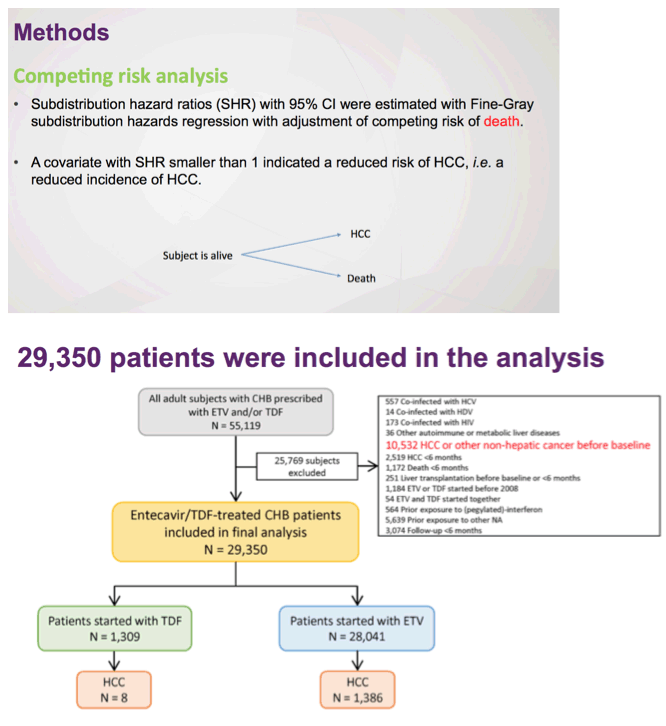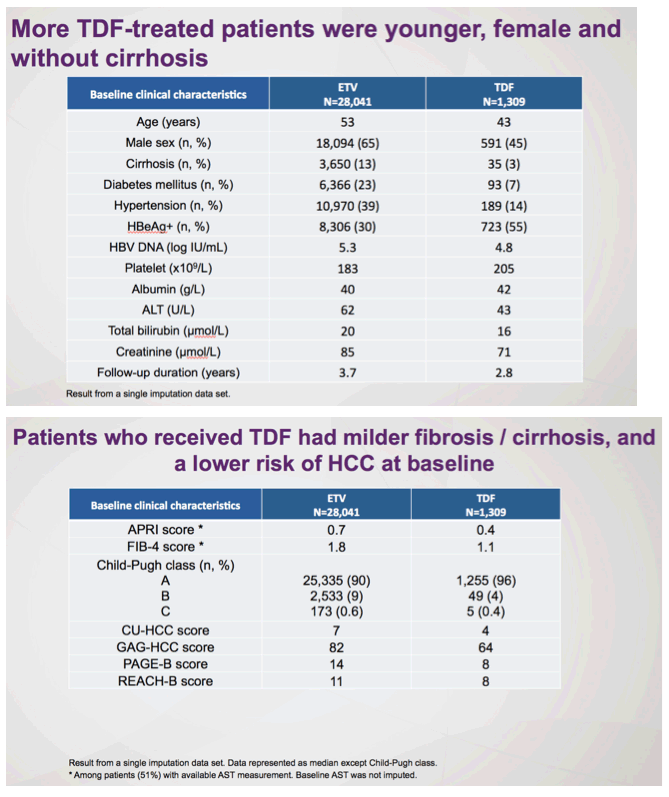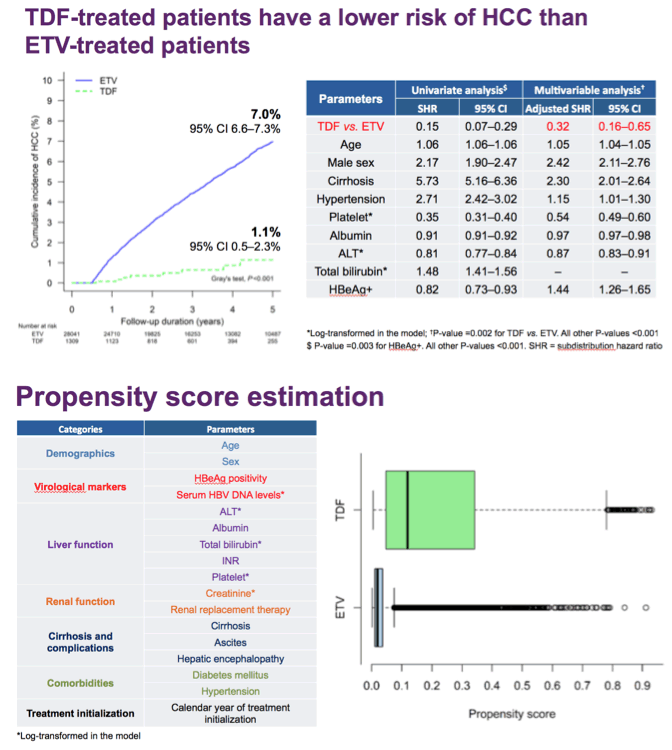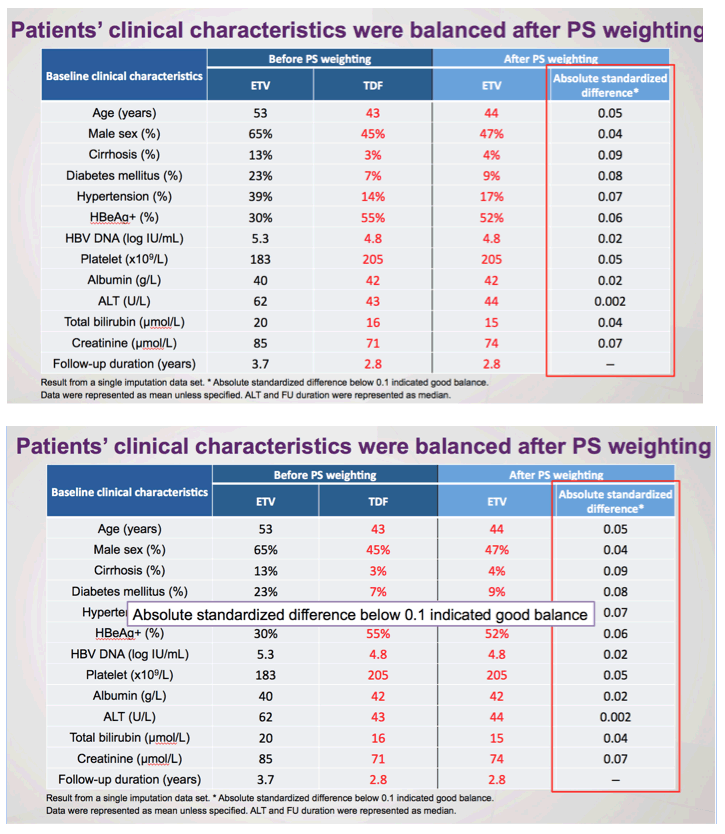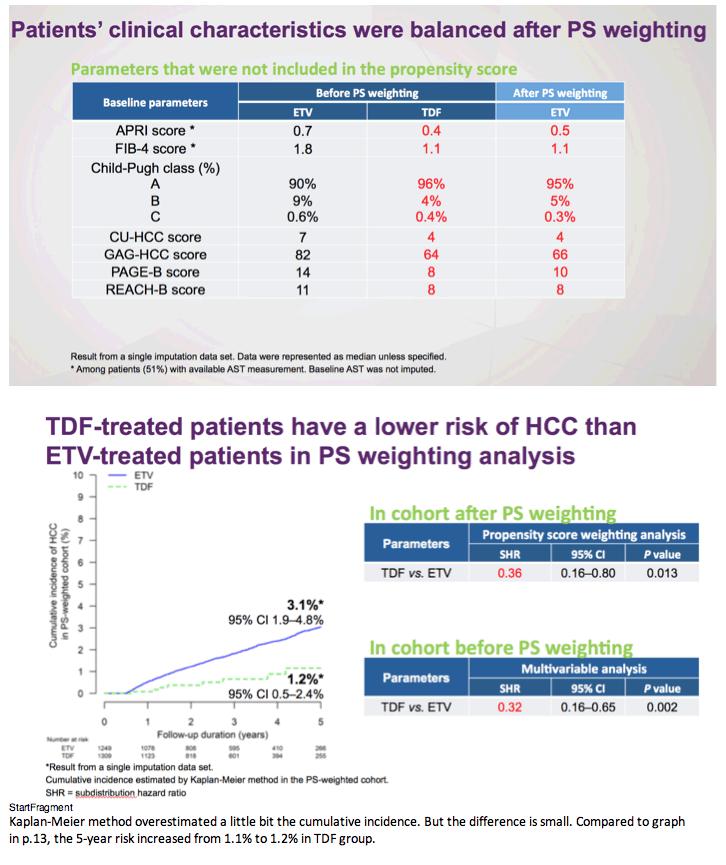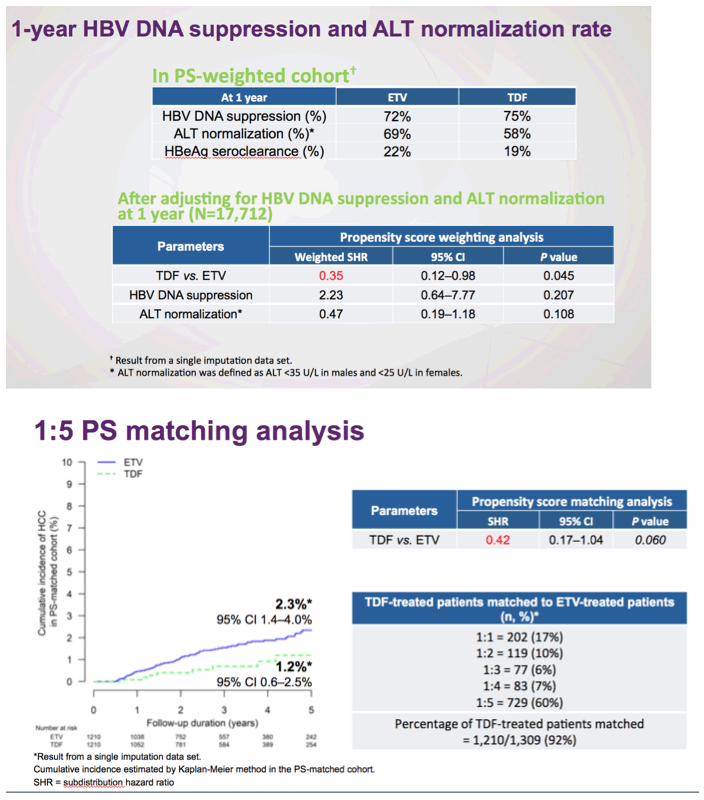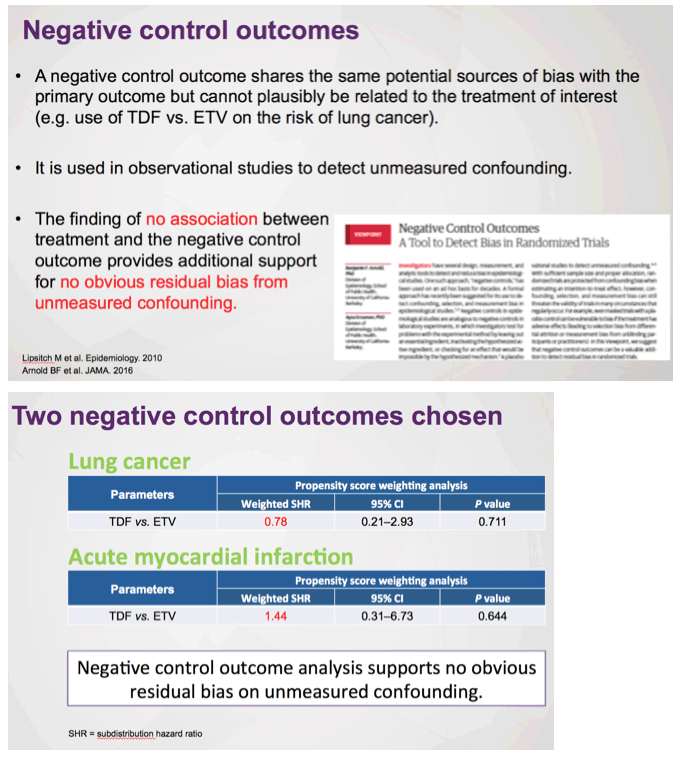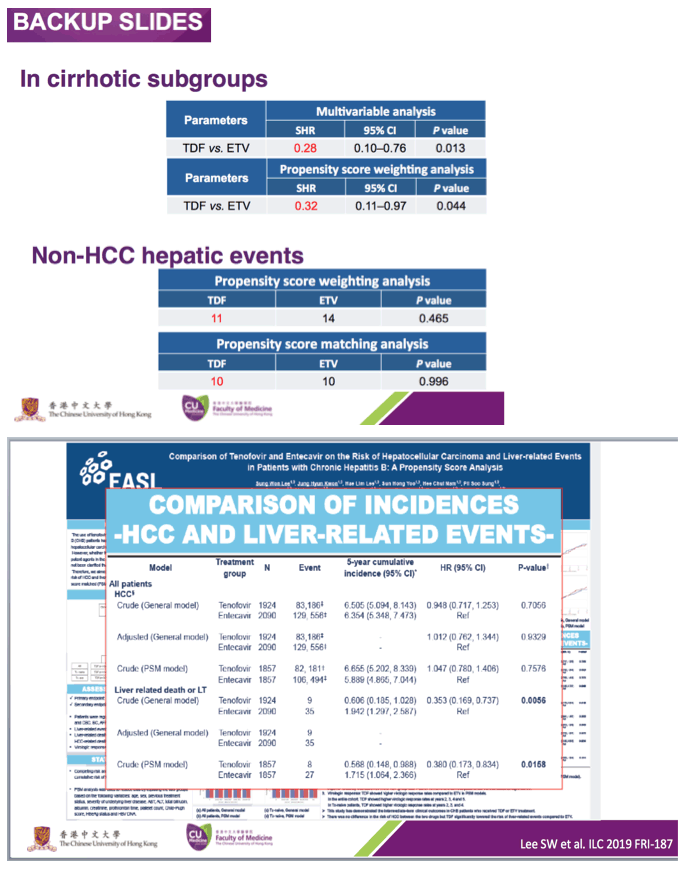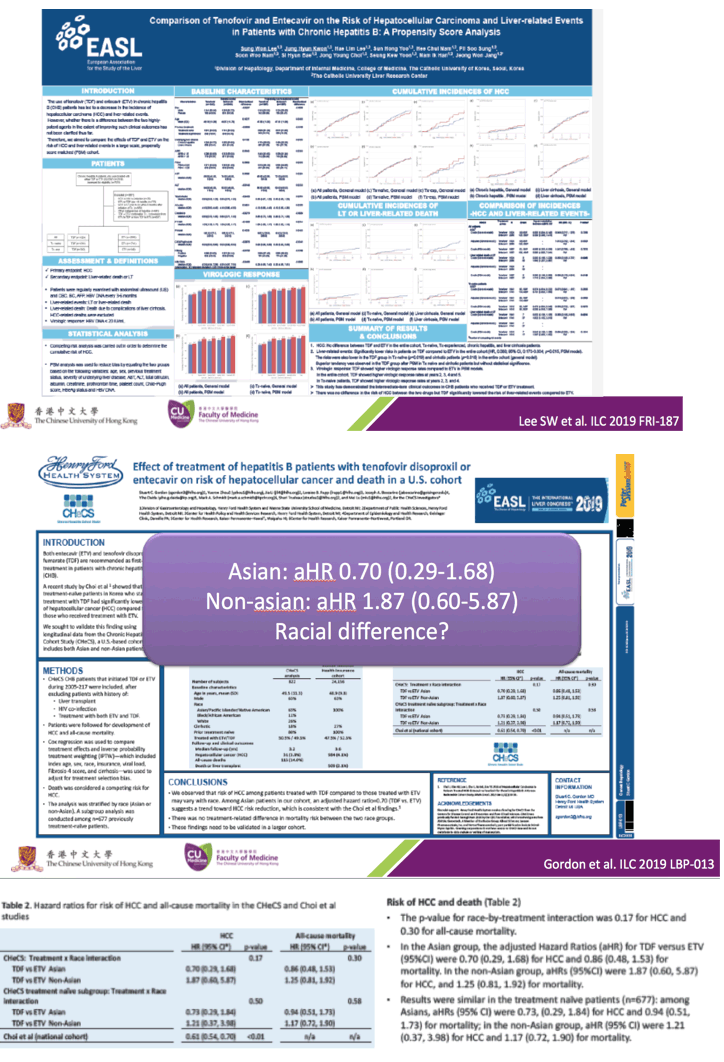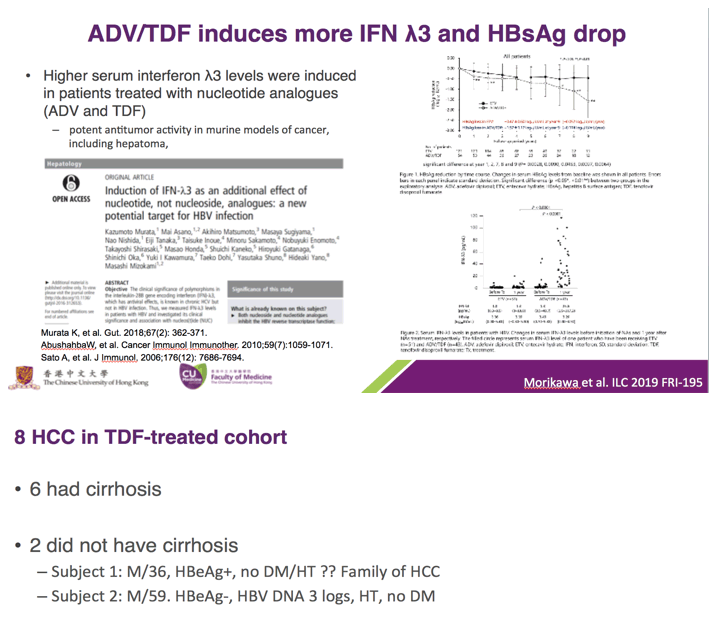Tenofovir treatment has lower risk of hepatocellular carcinoma
than entecavir treatment in patients with chronic hepatitis B
EASL 2019 April 10-14 Vienna (home of gelato)
Terry Cheuk-Fung Yip1,2, Vincent Wai-Sun Wong1,2,3, Yee-Kit Tse1,2,
Henry Lik-Yuen Chan1,2,3, Grace Lai-Hung Wong1,2,3
1Institute of Digestive Disease,
2Department of Medicine and Therapeutics, and
3State Key Laboratory of Digestive Disease,
The Chinese University of Hong Kong
Download the PDF here
Download the PDF here
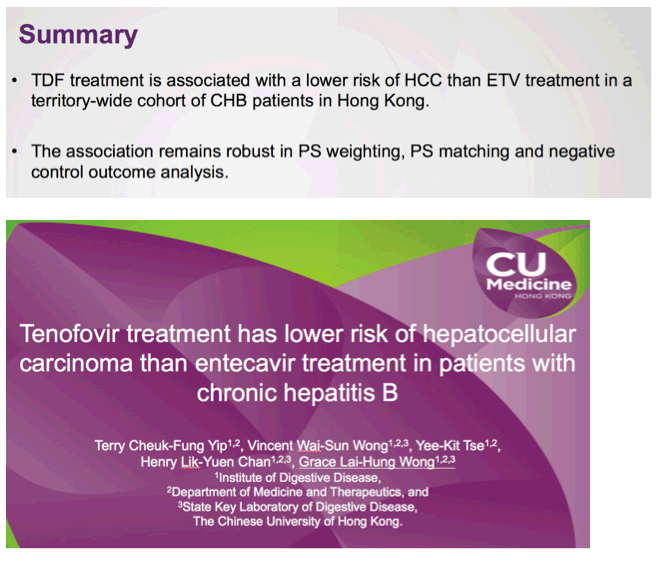
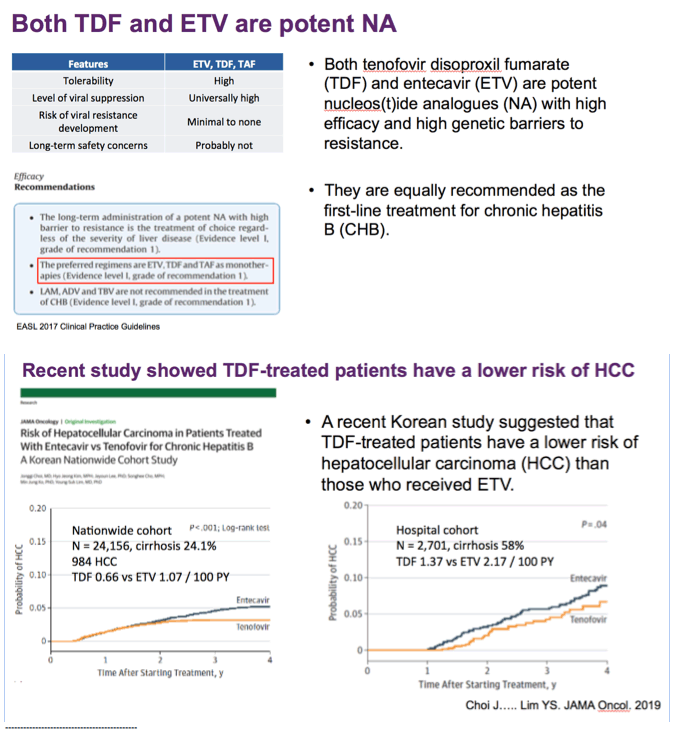
--------------------------------------------
| ||||||||||
